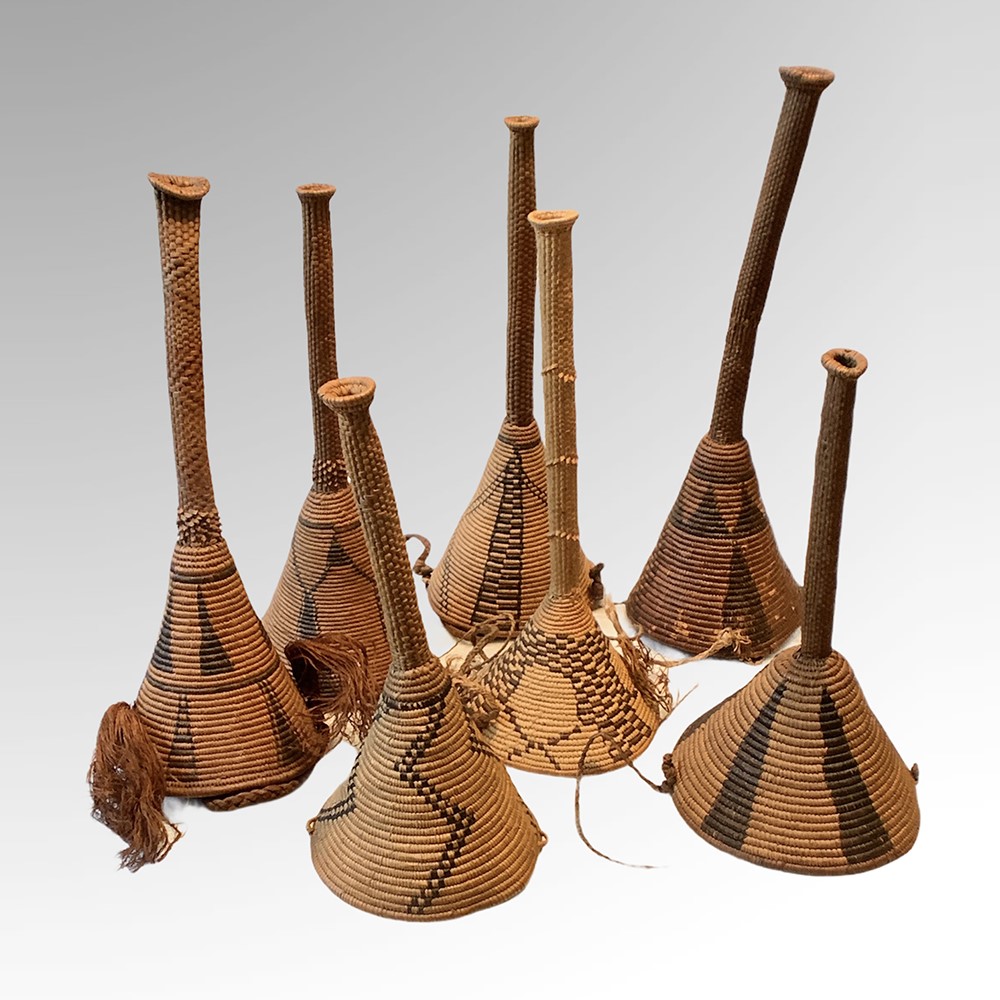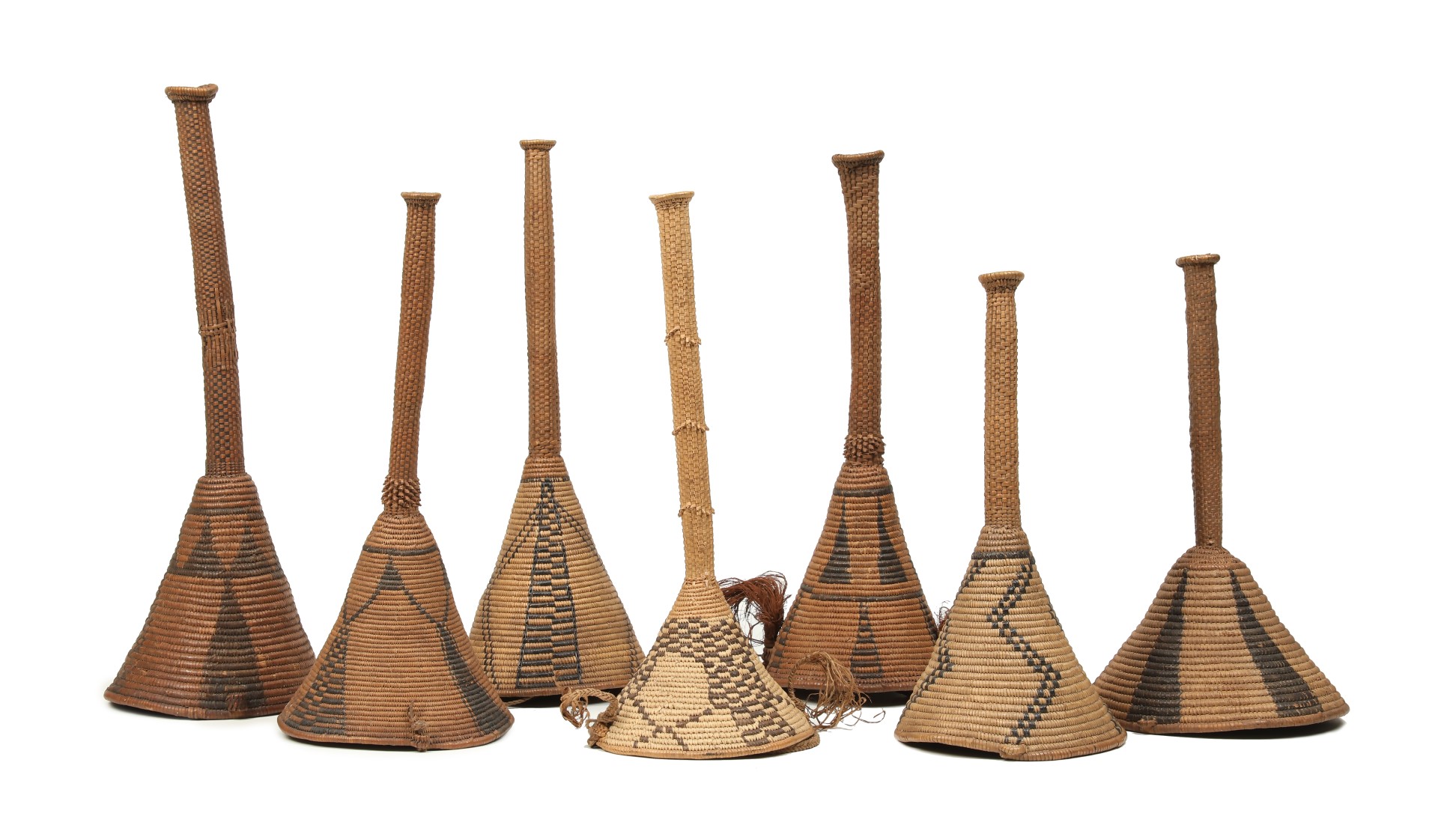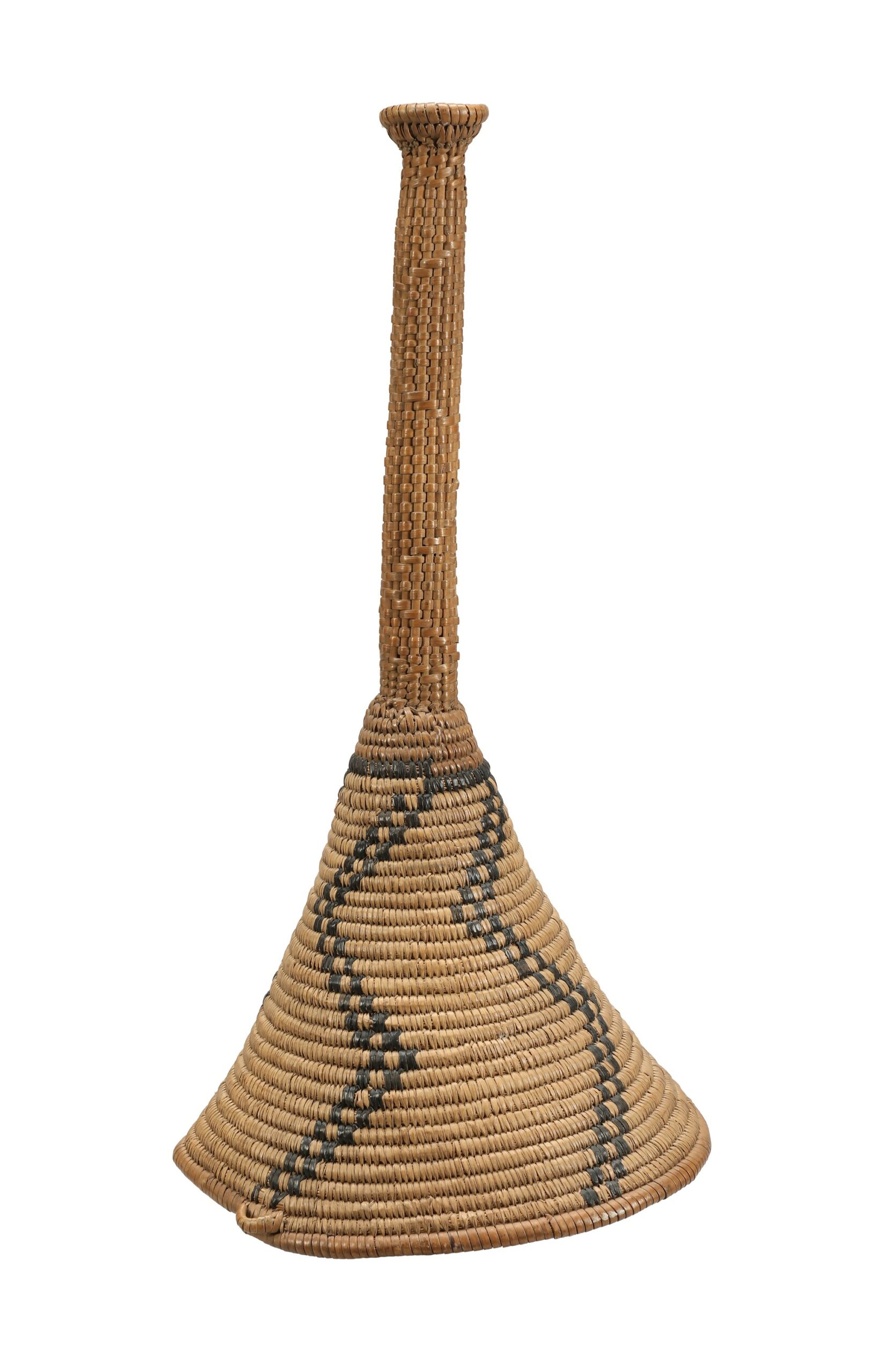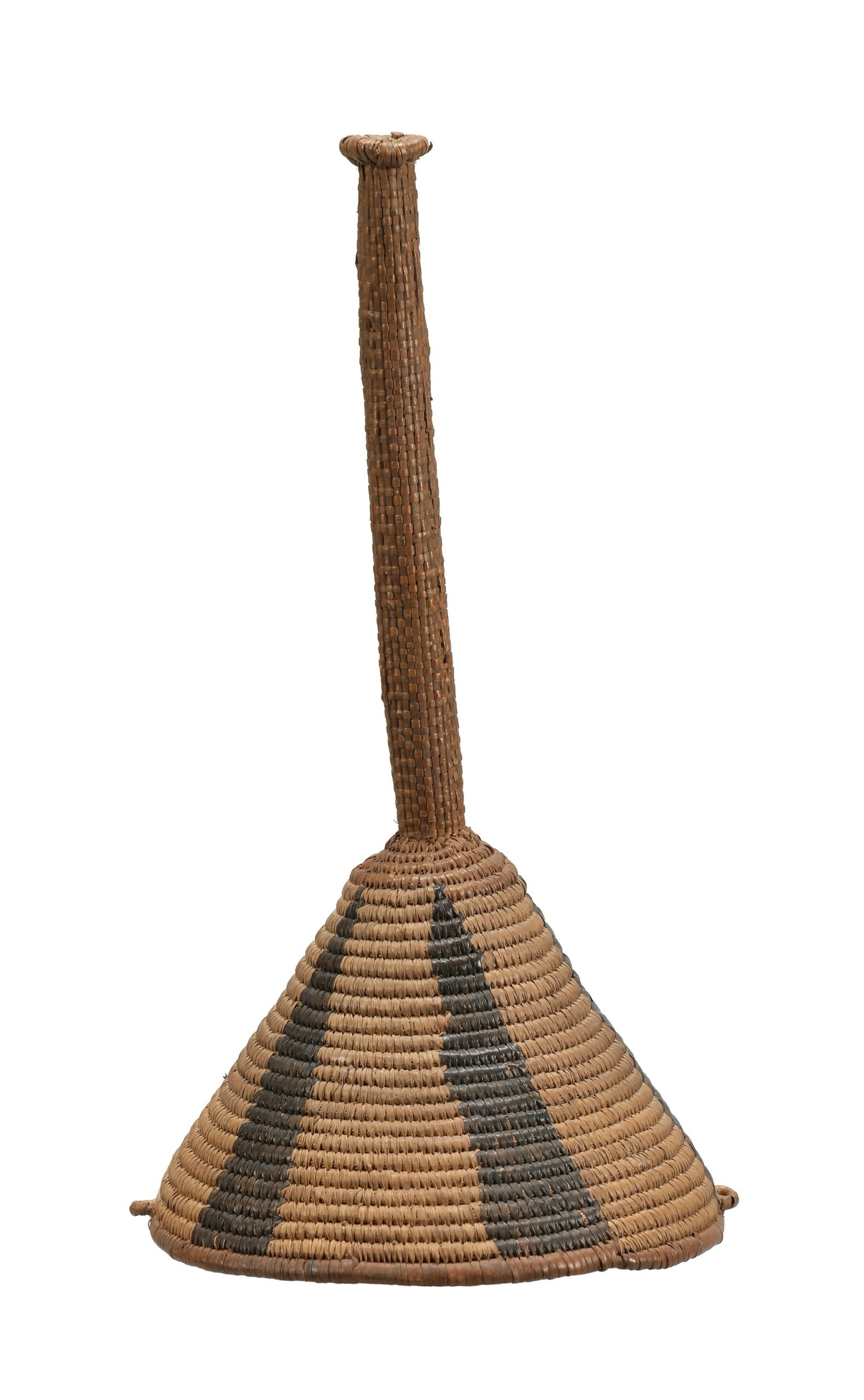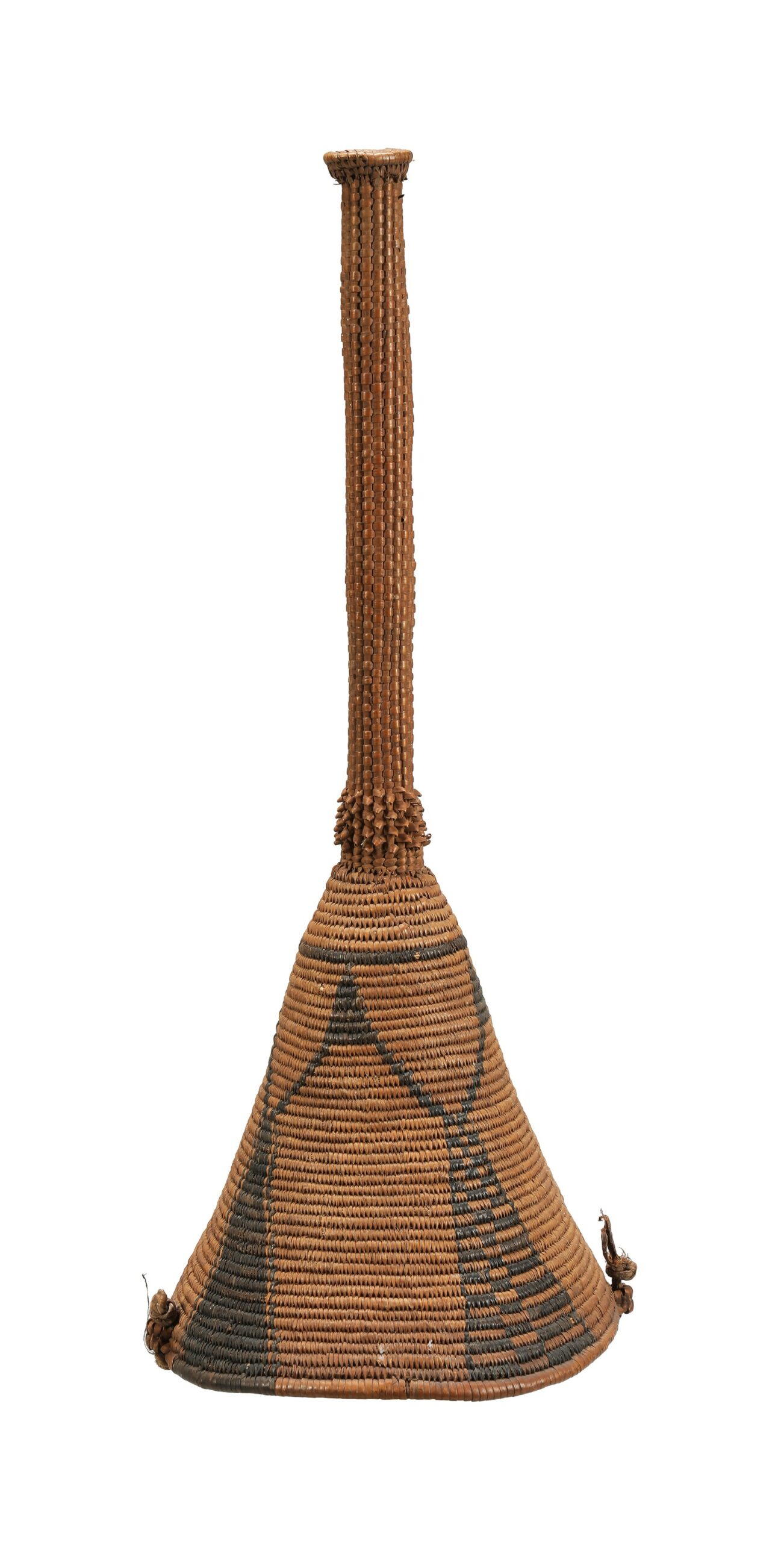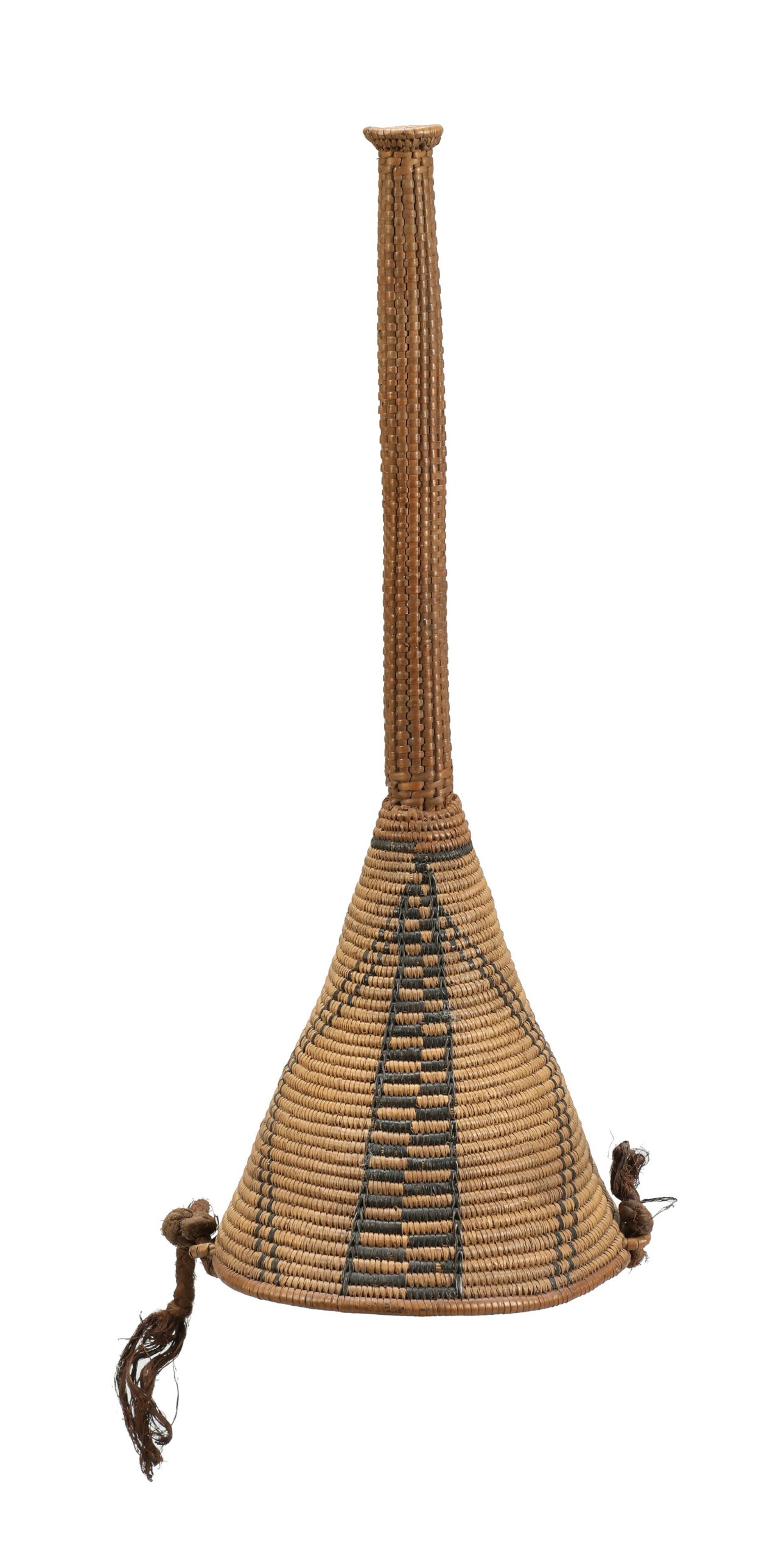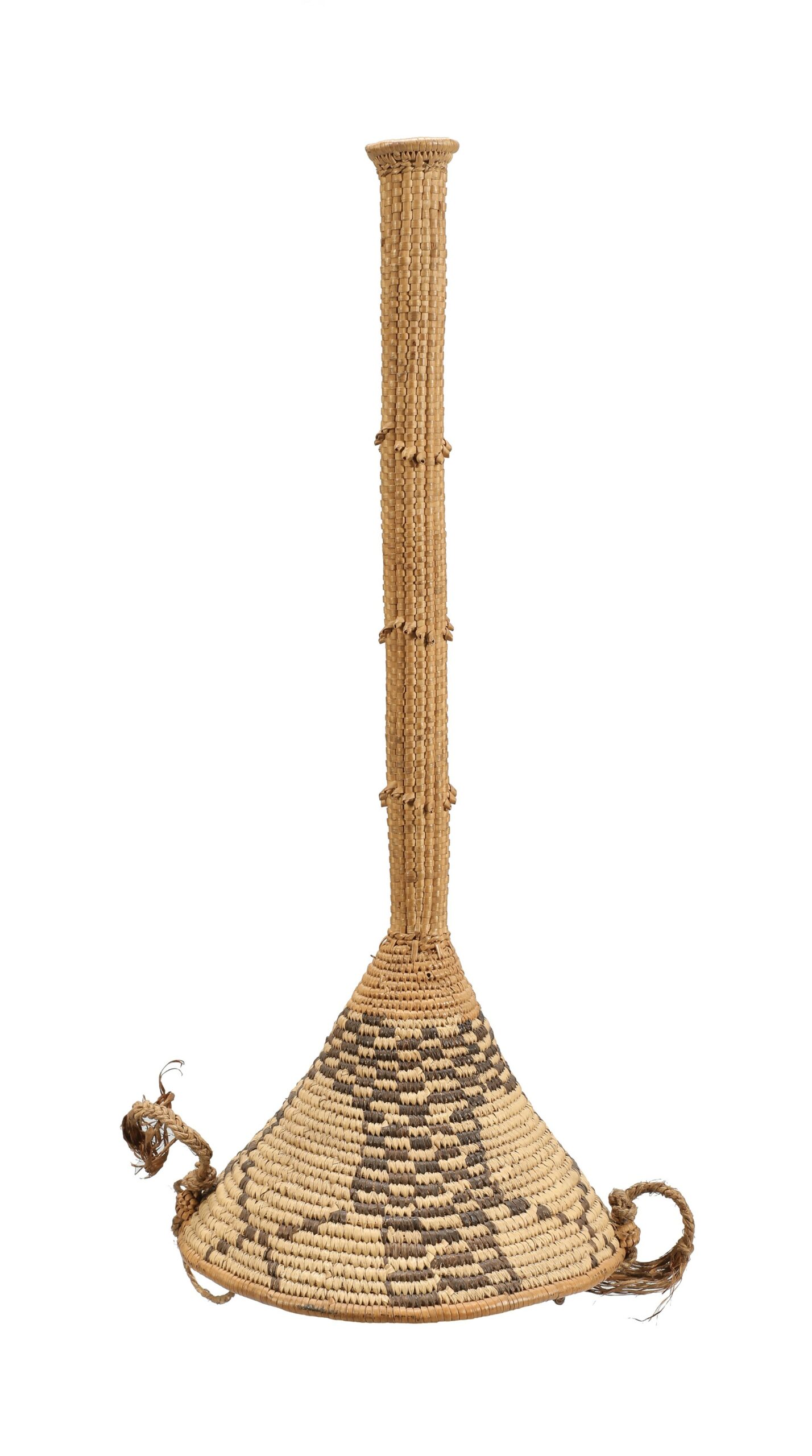Chiefs’ Headdresses
DR Congo, (Ituri, Kivu, Ubangi or Lake Albert)
Hema or Lendu people
Early 20th century
Plant fibers, natural dye
Stitched coil weave, twining
smallest H 12 ins. D 5 1/2 ins ( 30 x 13.75 cm)
tallest H16 1/2 ins. D 6 ins. ( 41.25 x 15 cm)
These chiefs’ headdresses, collected in the northeastern DR Congo, represent a unique and largely undocumented dimension of the renowned tradition of fine basketry from the Great Lakes area, which typically does not extend to ceremonial headgear or personal adornments made of fiber.
A few known examples (e.g. one collected in 1914 in the Africa Museum, Tervuren) are now mostly attributed to the Hema and/or Lendu. The nomadic Hema were pastoralists who migrated from the Nyoro kingdom in Uganda in the 19th century to settle among the Lendu in the Ituri. Like the Tutsi, their elite status was deeply connected to the wealth of cattle ownership and the widespread cultural significance of the animal.
The headdresses share a visual aesthetic, similar materials, and methods of fabrications with these other traditions. Their eccentric black zigzag and triangular pattern schemes also evoke comparison with the unconventional designs of certain basketry from Burundi and, especially the horn-tipped lids for milk vessels made by nomadic Hima and Haya of NE Tanzania.
Each conical form is topped with a separately woven, rigid, twined fiber tube made to hold a crest of white or red feathers (long removed from this group). They were reportedly worn for dancing.
Third hat from left has been sold.
Price on request

